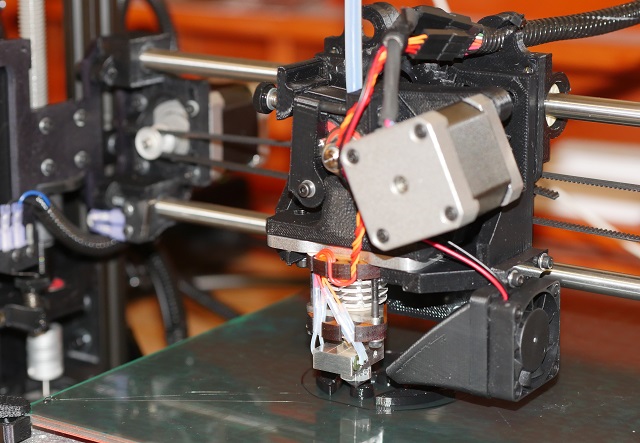
Advertisement
Special molecules that are triggered by the presence of light and other gentle stimuli are steadily seeing more uses in applications aside from adaptive eye-wear. British researchers found a way to print out these photochromic molecules using a cheap 3D printer, an article in Alpha Galileo stated.
Thanks to the proven capabilities of the 3D printer, the material can be produced cheaper and faster than before. The researchers believe their discovery can allow 3D-printed devices to see much wider use in electronics, healthcare, quantum computing, and other commercial high-tech industries.
Dr. Victor Sans Sangorrin and Dr. Graham Newton of the University of Nottingham served as the co-authors of the study.
“This bottom-up approach to device fabrication will push the boundaries of additive manufacturing like never before,” explained Sans. “Using a unique integrated design approach, we have demonstrated functional synergy between photochromic molecules and polymers in a fully 3D-printed device.”
Their new technique combined the strengths of three technologies. First, 3D printing can be used to design and build practically anything on short notice.
Second, the ionic liquids used to create polymers are very easy to tune, allowing them to meet specific requirements. Third and last, polyoxometalate molecules possess the photoactive properties required for the uses.
Sans and Newton published their findings in the scientific journal Advanced Materials. Aside from Nottingham, the study was sponsored by the Leverhulme Trust and the German Academic Exchange Service (DAAD). (Related: 3D printing machines are printing bananas and mushrooms for consumption in space.)

3D printers can now create advanced composite materials that react to light
In their experiment, the Nottingham team created a photoactive molecule that was normally colorless until it was exposed to light. When that happened, the molecule took on a blue color.
Furthermore, the molecule would revert to its achromatic appearance in the presence of oxygen in the air. But it would only do this once the light was gone.
Using a 3D printer, Sans and Newton added this photoactive molecule to a polymer that was specially designed to accommodate it. The resulting composite material can serve as a reversible means of storing simple information.
Newton asserted that their technique could accommodate any photoactive or photochromic molecule – printing these onto composite material was easy. Likewise, the 3D printer made it just as easy to adjust the shape or size of the material as needed.
He believed it was even possible to 3D print a composite material that was capable of storing more complex information until it was erased by the user. The encoded information could be a QR code or a barcode that identifies the material as a product in a store or a similar purpose.
Right now, the current composites are limited to changing color whenever they are hit by light. However, Newton and Sans believe they could adapt their approach to creating new energy storage materials and electronics.
By using a different group of photoactive molecules that produce minuscule amounts of power instead of changing color, the composite materials could store small amounts of energy. Another group of photochromic molecules would turn the materials into actual electronics that can perform simple tasks.
Similar molecules called “photoswitches” are being investigated for power generation. Researchers believe photoswitches can turn any form of light into electrical power for devices, thereby removing the need for bulky batteries and external power sources in future generations of electronic devices.
If the idea of 3D-printed composite materials interests you, then you can read other articles about technological breakthroughs at Discoveries.news.
Sources include:
Submit a correction >>
This article may contain statements that reflect the opinion of the author
Advertisement
Advertisements
















